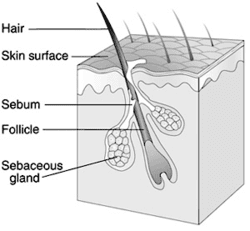Some of you will definitely rejoice over this news piece. Apparently, scientists in Europe have developed a treatment that has been proven to reverse the massive oxidative stress developed in hair follicles or gray hair. Moreover, the same compound has been found to be effective in battling vitiligo, a skin condition that causes de-pigmentation of sections of skin.

“To date, it is beyond any doubt that the sudden loss of the inherited skin and localized hair color can affect those individuals in many fundamental ways,” said Karin U. Schallreuter, M.D., study author from the Institute for Pigmentary Disorders in association with E.M. Arndt University of Greifswald, Germany and the Centre for Skin Sciences, School of Life Sciences at the University of Bradford, United Kingdom. “The improvement of quality of life after total and even partial successful repigmentation has been documented.”
According to the National Institute of Arthritis and Musculoskeletal and Skin Diseases, 1-2 million people in the U.S. have vitiligo, a condition that causes no physical discomfort of any sorts, but whose unaesthetic consequences might cause some people to feel insecure and affect quality of life. Schallreuter and colleagues analyzed an international group of 2,411 patients with vitiligo. Of that group, 57 or 2.4 percent were diagnosed with strictly segmental vitiligo (SSV), and 76 or 3.2 percent were diagnosed with mixed vitiligo, which is SSV plus non-segmental vitiligo (NSV).
“For generations, numerous remedies have been concocted to hide gray hair,” stated Dr. Gerald Weissmann, the editor-in-chief of The FASEB Journal, “but now, for the first time, an actual treatment that gets to the root of the problem has been developed.”
“While this is exciting news, what’s even more exciting is that this also works for vitiligo. This condition, while technically cosmetic, can have serious socio-emotional effects of people. Developing an effective treatment for this condition has the potential to radically improve many people’s lives.”


